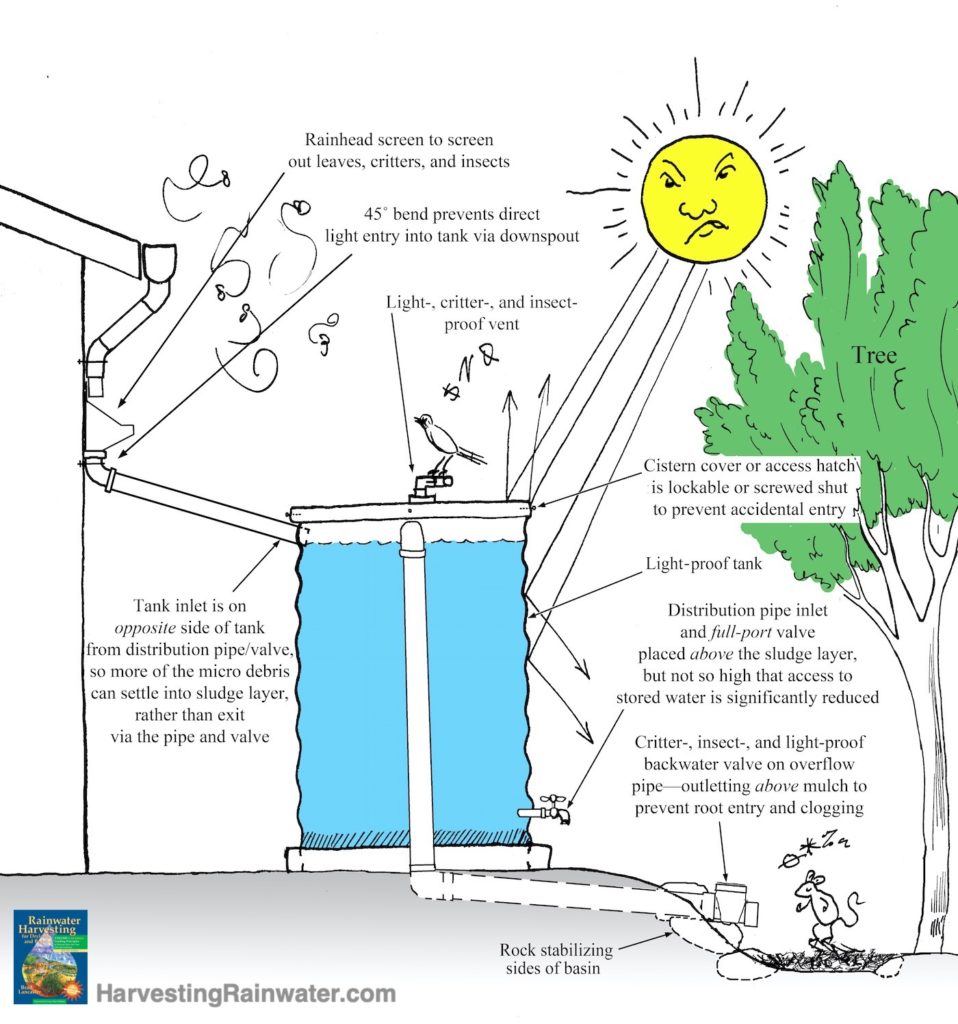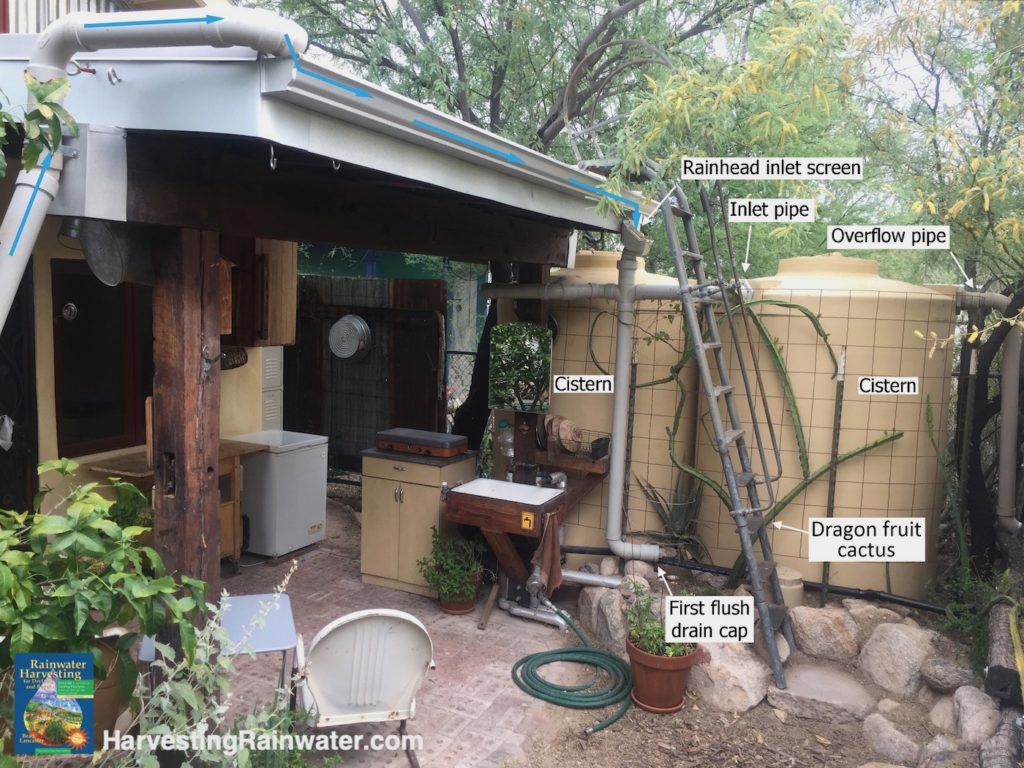Volume 1
including guiding principles for active water harvesting systems see chapter three of Rainwater Harvesting for Drylands and Beyond, Volume 1, 3rd Edition—available at deep discount direct from the author
Active water harvesting is the utilization of water-harvesting tanks, or cisterns, that capture and store water in times of plenty to make it readily available in times of scarcity. Active systems need someone to actively interact with them to work. For example, a tank full of water does not work until someone turns a valve on or off to access the water. A tank with an automatic timer on the valve is also an active system because someone must still program and maintain the timer.

A core aim of active water harvesting is to give a site and a community more resiliency by enabling us to utilize free, on-site waters rather than costly imported waters.
In Seoul, South Korea Professor Mooyoung Han has been promoting the idea of harvesting water from every building’s roof for me, for you, and for everyone. The “me” tank harvests roof runoff for my regular on-site water needs. The “you” tank helps you by harvesting water that would otherwise flow off-site and flood those of you in downslope areas (and the harvested water is quickly and readily used to make room for more water capture in the next rain). The “everyone” tank harvests and stores water until there is a community need such as emergency water in drought, fire, earthquake, etc.
Tanks are more dynamic when they do more than harvest water. Above-ground tanks can also work as wind breaks, privacy screens, and shade structures. Tanks’ stored water can moderate indoor temperatures. And cisterns can double as an art piece, sign, patio/deck, and more. See Rainwater Harvesting for Drylands and Beyond, Volume 1, 3rd Edition for examples and tips.

Tank systems cannot repair or reproduce themselves like a living passive system, because the tanks are not alive. But they can be designed with some regenerative, living elements. For example, design/manage your tank overflow as a resource, not an afterthought. Direct the overflow via gravity (not a pump) to a high point of your landscape from which it can freely flow to more beneficial uses such as passive water-harvesting earthworks that use the overflow water to grow shade to shelter and beautify the tanks while improving the quality of the water stored within them. Water stored at cooler temperatures tends to be of a higher quality that water stored at higher temperatures. Tank systems can also be designed to overflow to another tank (that you install now, or set up the system so this could be an easy option in the future).
The essence of an active water harvesting system is how it can provide us with high-quality (ideally drinking-/potable-water quality) free, on-site water that is easily and conveniently accessible. This is easiest to achieve when using materials (such as roofing, pipe, and tanks) rated for potable water quality, and by following the ten cistern system principles (in chapter 3 of Volume 1) that naturally keep the water clean, safe, and convenient.

Active systems become more active, and require more energy and costs, when mechanical pumps and filters are used. But an active system can hybridize with lower-cost, lower-energy-consuming passive design/strategies. Ideally, free gravity—not costly mechanical pumps—powers the distribution of water to and from tanks. You can boost water pressure with a pump, but if you set all to work with gravity, all will still work if the supplementary pump breaks down or loses power. At minimum, all tank systems should be designed to passively drain their overflow water with gravity – not a pump to avoid unwanted failure and flooding.
Active tank strategies—and the water they harvest—can indirectly help recharge and enhance groundwater aquifers, springs, wetlands, creeks, and rivers by reducing or eliminating the amount of water that would otherwise be extracted from those water sources.
• For more advantages of active water harvesting, and how it compares to passive water harvesting see here.
• For passive water harvesting see here

including guiding principles for active water harvesting systems see chapter three of Rainwater Harvesting for Drylands and Beyond, Volume 1, 3rd Edition—available at deep discount direct from the author